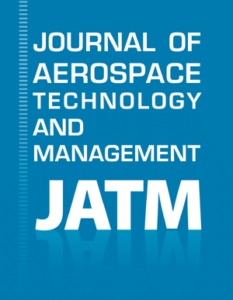João Francisco Galera Monico, Pesquisador I, Departamento de Cartografia, Unesp, Presidente Prudente, SP, Brasil.
 The use of GNSS for air navigation is a worldwide tendency today and will be the main technology to be adopted in the future for determining the position of aircraft in all phases of flight. This technology has numerous advantages, with a considerable reduction in the need to install equipment on the ground, optimization of airspace, reduction of flight time and consequent fuel savings, among others. However, GNSS signals are strongly influenced by the ionospheric layer, especially in Brazilian territory, with the introduction of errors that can affect the requirements for its use, especially integrity in the case of air navigation. But other activities, which require real-time positioning, also suffer from these effects, such as precision agriculture, which is widespread in Brazil.
The use of GNSS for air navigation is a worldwide tendency today and will be the main technology to be adopted in the future for determining the position of aircraft in all phases of flight. This technology has numerous advantages, with a considerable reduction in the need to install equipment on the ground, optimization of airspace, reduction of flight time and consequent fuel savings, among others. However, GNSS signals are strongly influenced by the ionospheric layer, especially in Brazilian territory, with the introduction of errors that can affect the requirements for its use, especially integrity in the case of air navigation. But other activities, which require real-time positioning, also suffer from these effects, such as precision agriculture, which is widespread in Brazil.
The application of GNSS-based technologies in aviation, as well as in other applications that require real time, especially over Brazilian territory, requires a thorough assessment of the effects of the ionosphere. Faced with this situation, several researchers from institutions in the aforementioned areas proposed a project to create a National Institute of Science and Technology (INCT), which was approved in the so-called CNPq 16/2014. In the article entitled The GNSS NavAer INCT Project Overview and Main Results, published in the journal JATM (vol. 14), it is proposed to present an overview of the project, the main results and the future challenges.
Due to the scope of the subject, the team involved in the article and in the project is multidisciplinary, led by Unesp and with the participation of several institutions in Brazil (INPE, ITA, IAE, PUC-Rio, UFPR, UTFPR and IFSP-PE) in addition to the collaborating institutions. The subject in question is also investigated in several institutions at an international level, such as the University of Nottingham, Boston College, Stanford University, Polytechnic University of Catalonia, among others, with which the authors involved in the study have maintained collaboration.
Several specific GNSS receivers for monitoring the ionosphere, especially regarding the occurrence of ionospheric scintillation, were deployed in appropriate locations within the Brazilian territory. Others are yet to be installed. A large amount of data is collected and stored in databases developed for carrying out queries and research related to the project.

Image: authors
Figure 1. Architecture illustration of a GBAS.
Several results from theses and dissertations linked to the project are described in this article. One of the important results obtained, contrary to what was expected, is that modernized GPS signals, one of the components of GNSS, are more affected by the occurrence of ionospheric scintillation than legacy signals.
Another important result presented concerns the ionospheric risk model developed for several airports in Brazil, aiming at the use of GBAS (Ground Based Augumentation System) in precision procedures. The initial results showed that, depending on the region, usage restrictions should be imposed regarding the use of GNSS to support precision procedures, such as the landing of an aircraft.
The challenge is still great. Future research should focus on models for predicting the behaviour of the ionosphere, including the occurrence of scintillation, as well as the development of methodologies aimed at mitigating the phenomenon, including multifrequency GNSS data. The development of a model that provides the probability of occurrence of ionospheric scintillation above a risk level, when landing an aircraft is also part of the challenges.
Watch the video of João Francisco Galera Monico extending the presentation of the project.
To read the article, access
MONICO, J.F.G., et al. The GNSS NavAer INCT Project Overview and Main Results. Journal of Aerospace Technology and Management [online]. 2022, vol. 14, e0722 [viewed 20 May 2022]. https://doi.org/10.1590/jatm.v14.1249. Available from: https://www.scielo.br/j/jatm/a/ZKdy3YGSRznxgnHSrSRDkZx/
Link(s)
Unesp – Faculdade de Ciências e Tecnologia – Câmpus de Presidente Prudente: www.fct.unesp.br
GNSS-NavAer: https://inct-gnss-navaer.fct.unesp.br/pt/
ISMR Query Tool: https://ismrquerytool.fct.unesp.br/
Divulgação do INCT GNSS-NavAer: https://youtu.be/-CsR6pRkxQQ
João Francisco Galera Monico: Lattes | Instagram | Facebook
JATM – Journal of Aerospace Technology and Management: https://www.scielo.br/j/jatm
Como citar este post [ISO 690/2010]:


















Recent Comments